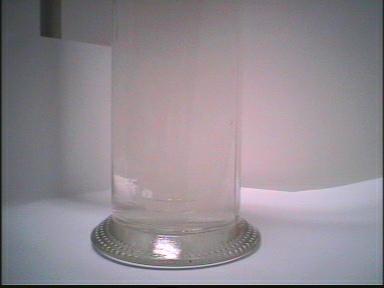

| 1. |  |
2. |  |
| Addition of chlorine gas | Emission of red light |
| Photo 1: | Chlorine gas is added to a gas wash bottle containing a cooled mixture of hydrogen peroxide solution (30%, 30 ml)) and caustic soda solution (20 g NaOH in 140 ml water). |
| Photo 2: | Dimming the lights shows that the solution glows red. Chlorine reacts
with sodium hydroxide to form sodium chloride and sodium hypochlorite:
Cl2 + 2 NaOH® NaOCl + NaCl + H2O The hypochlorite ions that are formed then react with hydrogen peroxide to form chlorine peroxide ions, which form oxygen through the separation of chlorine: H2O2 + OCl-®
ClOO- + H2O
1O2®3O2
+ |